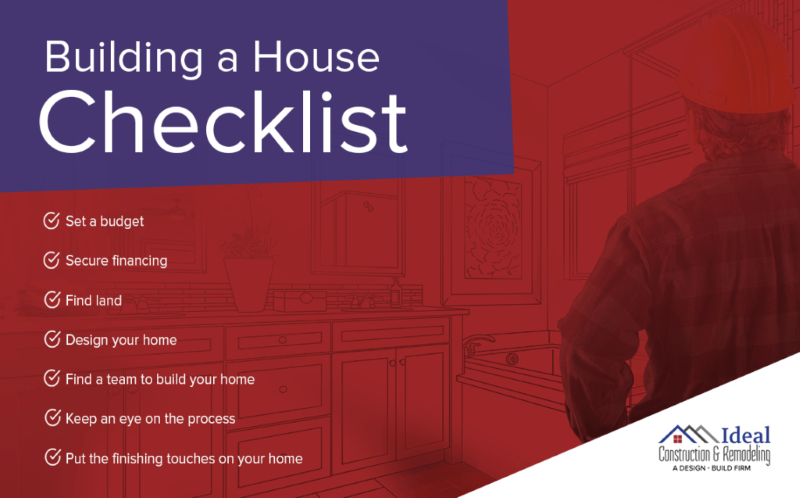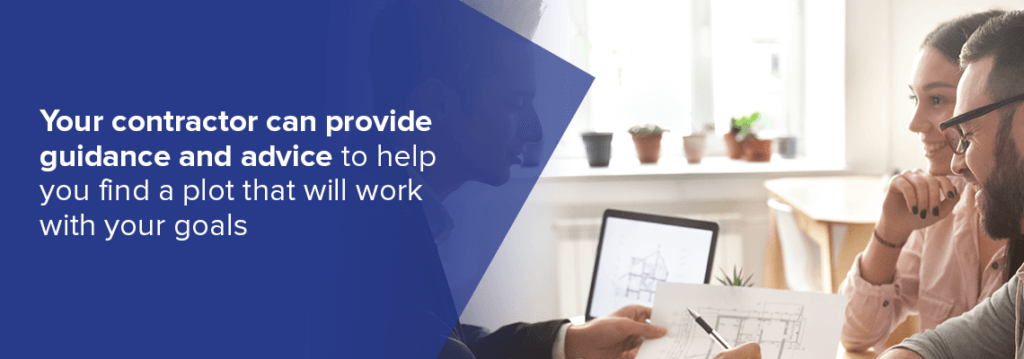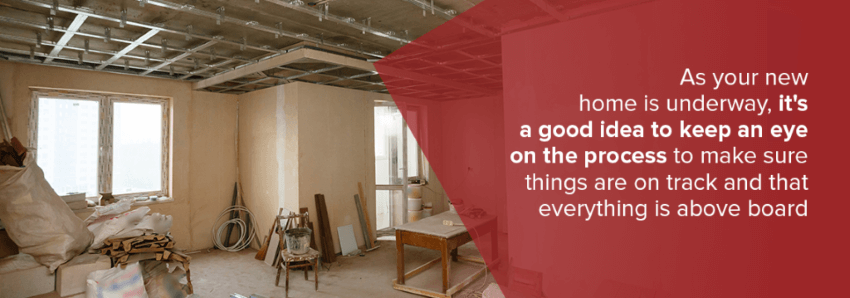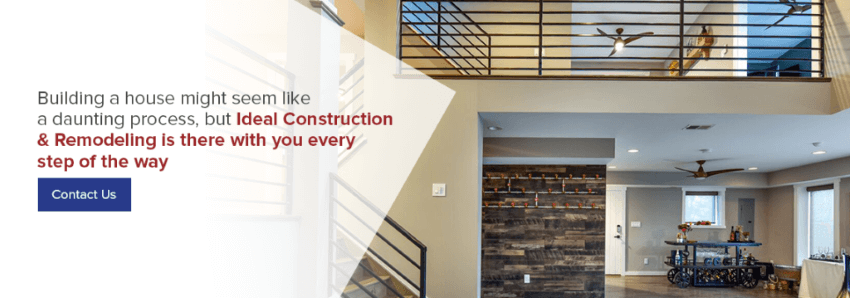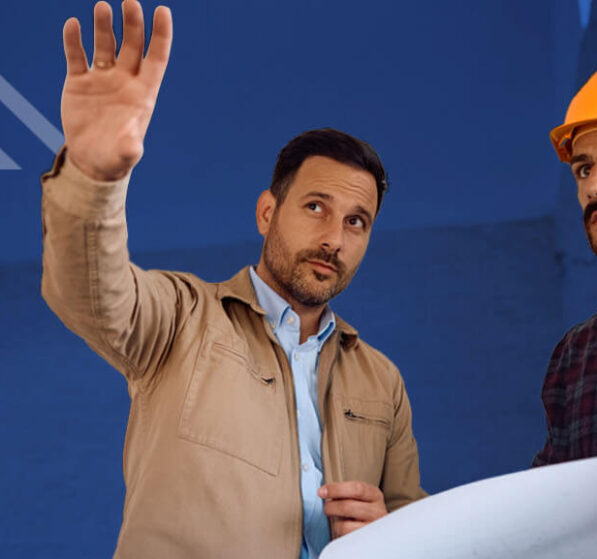How to Build Your Dream Home

You’re in the market for a new home. Perhaps you need to move for a job or because your current home no longer meets your needs. You’ve been looking at existing houses, but none have caught your eye or made you feel excited about moving in.
Have you thought about building your house yourself? Building a custom home might sound complicated and trickier than moving into a pre-existing model. But for many buyers, it’s the right option. If you’re interested in moving into your dream home, it might be up to you to build it.
Why Build Your Home?
Why go to the effort of building a home, especially when there are so many existing homes available? There are several pros and cons of building a house. Let’s start with the advantages. When you build your own house, you end up with a home that meets your specific needs. You can specify the number of bedrooms or bathrooms in the home. If you want your house to have skylights or other architectural details, it can.
Depending on the market in the area you want to move to, it can be easier to build from scratch than buy an existing house. As of June 2019, homes spent an average of 65 days on the market. Increased competition can also make it challenging to find the right home when you’re looking at pre-existing models.
Another plus when it comes to building your home is that you’re going to end up with a property that’s modern, energy-efficient and up to code. If you’re interested in incorporating smart features into your home, it can be easier to do so when you build from the ground up.
Of course, there is one potential drawback to building your home. If you’re on a tight schedule, it might not be the right choice for you at the moment. It takes an average of seven and a half months, from start to finish, to build a new home in the U.S. That said, you can make other living arrangements while you wait to finish the build, such as renting another house or postponing the sale of your existing home.
Building a House Checklist
Ready to build your dream house? The checklist below will help you figure out where to get started and the steps to take to get your home off of the ground.
- Set a budget: The first thing to do when building a house is to determine how much you can afford to spend. Things to consider when putting together your budget include the cost of buying land, the cost of construction, the cost of working with an architect, contractor and others, any local taxes or fees you’ll need to pay and the cost of putting the finishing touches on the home.
- Secure financing: If you aren’t paying for your new home in cash, you’ll need to find a way to finance the property. Most likely, you’ll need to get a construction loan, rather than a traditional mortgage.
- Find land: Where you decide to build your home influences what type of features you can include.
- Design your home: Think about the must-have features of your new home and the things you’d like to have, but can live without. It can be a good idea to throw in everything you want when you start designing your home, then pare things down as you move forward.
- Find a team to build your home: You don’t have to build your home singlehandedly. Working with a custom home building team means someone is with you every step of the way as you put together your dream home.
- Keep an eye on the process: Even if you work with a team of professional homebuilders, it’s still a good idea to keep an eye on the project and to make sure things are on track and on schedule.
- Put the finishing touches on your home: Once construction wraps up, you can focus on the little details, such as landscaping and transforming the house into a home.
Financing
When you buy a pre-existing home and want to get a loan to do so, you can apply for a mortgage. How much you can borrow depends on your income and credit history. You can also borrow money when building a home, but the process is a little different.
Since the home doesn’t exist when construction begins, you need to get a construction loan during the building process. Once the project concludes, you can convert the loan into a traditional mortgage. Depending on the lender you work with and the terms of the loan, a construction loan might automatically convert into a mortgage at the end of the project. In some cases, you might need to refinance your construction loan into a mortgage down the road.
Lenders that make construction loans are taking on a bit more risk than those that issue standard mortgages. You will most likely need to have excellent credit to qualify for a construction loan. The lender might also want you to make a down payment of at least 20%, if not 25%.
You can also expect your lender to get involved in the building process. Usually, lenders pay builders at predetermined points in the construction process. The lender is likely to want to confirm the builder is staying on track and completing the work before it distributes payments.
Here’s one last thing to note about financing for building a new home: Your loan payments will likely be interest-only during the construction phase. Once the project concludes and the loan converts to a mortgage, or you refinance it into a mortgage, you’ll begin to make payments on both the principal and interest.
Find Land for Your Home
Before you start to build your dream home, you need to have land on which to do so. When you are looking for plots of land for your custom home, there are several things to keep in mind.
- How big is the plot? The size of the plot not only determines how big your new home can be. It also determines the price you’ll pay, and how much yard space you’ll have.
- What is the quality of the land? Some land isn’t good for building homes on. For example, if the property is on a hillside, it can be tricky to build a house. The soil quality and other conditions also determine how usable the land is.
- What’s nearby? Is the plot part of a development, or is it off in the woods somewhere? Will you have next-door neighbors, or is the closest home a mile away? Also think about natural features, such as lakes, large trees, open fields and so on.
- What direction does the plot face? The direction of the land can influence the amount of sunlight your new house and yard receive. If you want to have a garden on your property, understanding the direction of the plot can help you figure out where to put it.
- Are utilities available? If the land is very undeveloped, there might not be gas lines or electrical lines leading out to it. You might have to install a septic system or build a well for water.
- What zoning laws apply to the land? You might have to ask for a change of zoning before you can build your house.
Once you’ve found a plot that looks promising, it can be a good idea to have your custom building team visit the property to get an idea of what you can do with the land. If you’re still in the process of finding land for your home, your contractor can provide guidance and advice to help you find a plot that will work with your goals.
Develop a Plan for Your Home Build
After you’ve found the land for your home, or even before, it’s time to start thinking about what you want in the house. Having an idea of what you want your custom home to look like and the features you’d love it to have will help you describe what you want or need when you talk to a contractor. Some things to include in your home’s building plan include the following.
- The size of the house: How many square feet would you like the home to be?
- The number of stories: Do you want a single-story, ranch-style home or a house that is two or more stories tall?
- The number of rooms you want: How many bedrooms do you need your home to have? What about bathrooms? Beyond the kitchen and living room, are there other spaces you’d like in the house? Do you want a finished basement?
- Features: Think of the details of each room and features you might want on the exterior of the house. Do you need a garage? Would you like a swimming pool? Do you want a large eat-in kitchen?
- The layout of the house: Are you hoping to live in a home with an open plan on the first floor, or would you prefer to have each area sectioned off into separate rooms?
- Where you want each room to be: Do you want all the bedrooms on the same floor, or would it make more sense to have the master bedroom on one story and the kids’ bedrooms and guest rooms on other levels?
- The amount of storage space you need or want: Do you want walk-in closets in each of the bedrooms? What about built-in bookshelves in the living room or a pantry attached to the kitchen?
- The appearance of the house: Is there a particular style of home that you love? Are you looking to build a cute Craftsman bungalow, or do you want a grand Colonial revival-style home?
Hire Contractors
You’re going to need a team of professionals to build your home. While you can act as the general contractor and hire sub-contractors to complete various parts of the project, such as installing plumbing or electrical work, it’s often easier and more convenient for you to hire a professional contractor and project manager to oversee the construction process. You can be as involved in the building of your new home as you’d like to be, but the burden of making sure the project moves along would fall to a professional.
Who can you expect to be part of your custom home building team? Usually, the following all play some role in designing and building a new home:
- Architect
- General contractor
- Plumber
- Electrician
- Tiler
- Interior designer
- Carpenter
- Roofer
- Landscape architect
Whether you work with a general contractor or decide to take on the role of project manager, there are a few things to keep in mind before you hire anyone. It’s a good idea to get quotes from multiple parties before you choose one. It’s also a good idea to ask for and verify references before you make a decision. Finally, gauge how you feel about the contractor or company. It helps to trust your gut and to keep an eye out for any red flags before you make a hiring decision.
Monitor Construction
As your new home is underway, it’s a good idea to keep an eye on the process to make sure things are on track and that everything is above board. For example, before the project begins, check in with the contractor to make sure they have all the permits in order and that they’ve purchased the appropriate insurance.
If you have a construction loan, it’s crucial to make sure your project stays on schedule. The lender will release payments as work progresses. It’s essential the building team does not get paid for work they haven’t completed yet.
Finally, if the area you are building in requires regular inspections or the lender requires them, make sure they take place as scheduled. You don’t want to risk losing financing or having your project put on hold because it hasn’t passed the necessary inspections.
What to Do After Construction
Your new home is ready to welcome you and your family! Take a few minutes to celebrate, then get to work on the finishing touches. Those might include cleaning up the site and getting the inside of the home move-in-ready. You might also hire a landscaper to plant shrubs, trees and flowers around your property.
The final thing to do is move in. Pack your bags and belongings, hire a moving company and start to make your new house your home.
Let Ideal Construction & Remodeling Build Your Custom Home
Building a house might seem like a daunting process, but Ideal Construction and Remodeling is there with you every step of the way. Our team has backgrounds in engineering, economics and architecture, and will work to turn your dream home into a reality.
We’ll take a look at your current site or help you choose an appropriate site for your home, will put together a detailed plan for your property and will oversee the construction process. Learn more about our custom home building process and get in touch today to schedule a free consultation.

